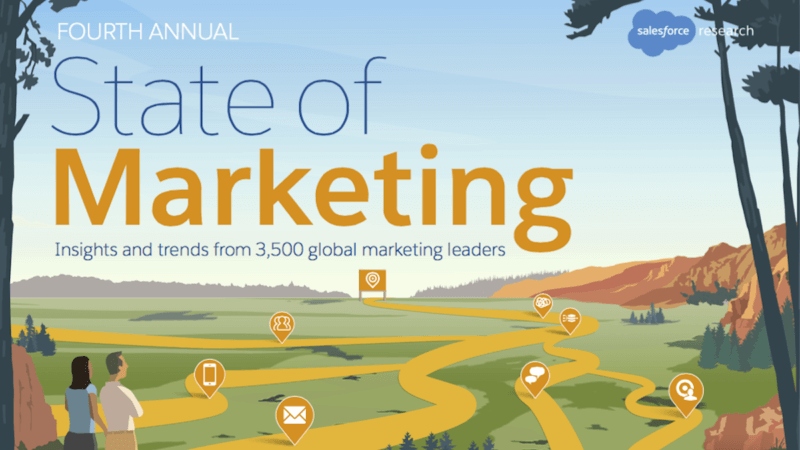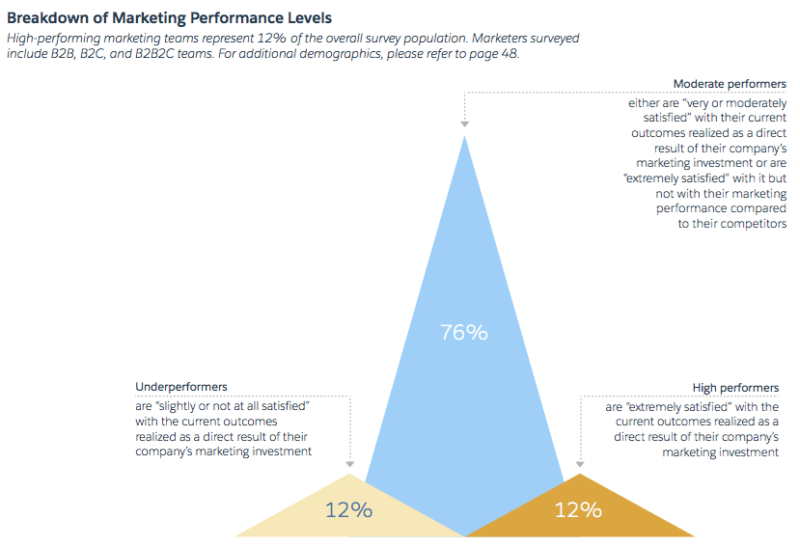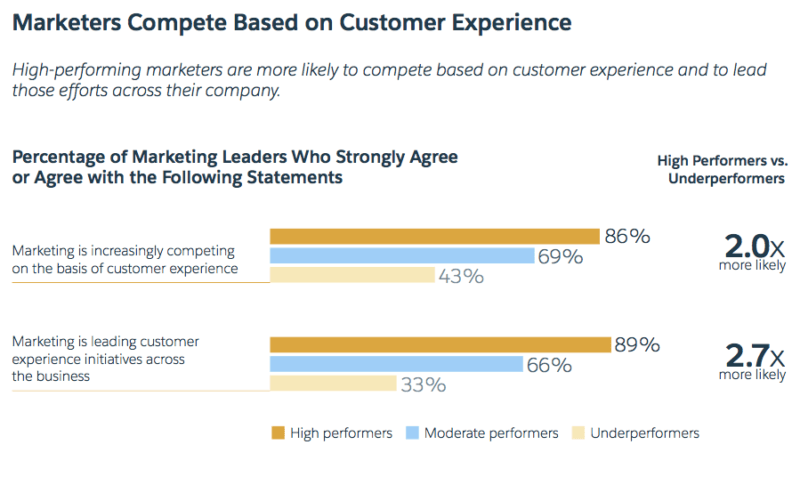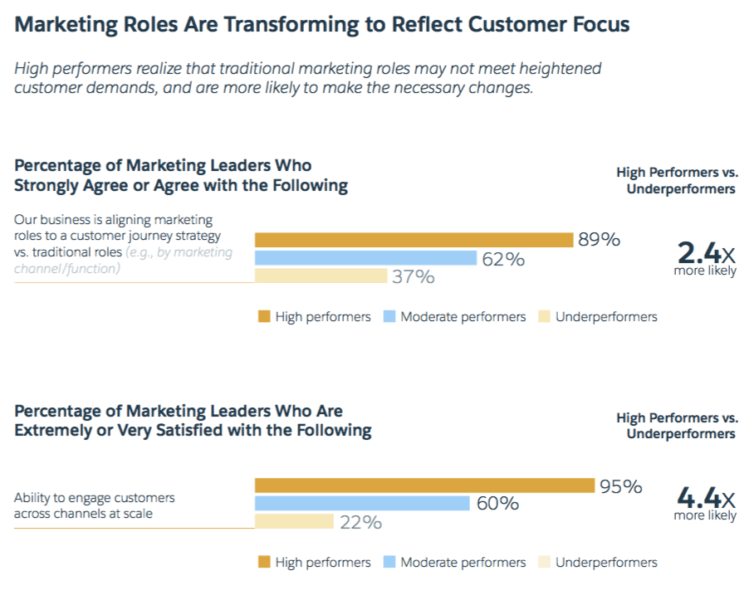This 4th annual survey also shows AI as a leading tech because it can improve efficiency, data value and personalization.

AI is booming and customer experience is the key.
So says the Fourth Annual “State of Marketing” report from Salesforce. In April, the company surveyed 3,500 marketing execs in 10 countries, not all of whom are customers.
One of the big takeaways in this year’s report, Marketing Cloud Director of Product Marketing Meghann York told me, is the adoption of artificial intelligence by “high-performing” marketers. They and other marketers see AI tech as a way to boost efficiency, extract the most value from data and ramp up personalization.
The report separates respondents into low-, medium- and high-performing marketers, based on how satisfied they are with their current outcomes. Twelve percent of respondents self-identify as the most satisfied high performers, and the report sees them as leaders.
For high-performing marketers, data management platforms are their most valuable technology, followed by customer relationship management (CRM) systems.
Of course, this is welcome news to CRM-based Salesforce, which bought DMP Krux last year. Third most valuable for high-performers: marketing analytics and measurement tools.
Key roadblocks for high performers are consumer privacy concerns, budgets and data kept in separate silos.
Perhaps the biggest shift in this report — which mirrors Salesforce’s own reorientation — is that customer experience is not just a focus of marketers, but has now become their central emphasis. In the age of the internet, customers can find a competing and more satisfying product or service in seconds if their experience with the brand isn’t top-notch.
Sixty-four percent of respondents say their company “has become more focused on providing a consistent experience across every channel as a result of changing customer expectation,” because customers expect personalized experiences.
And this new centrality of customer experience has led marketers to reorient their departments and their companies around customers’ stepping through product awareness, decision-making, purchase and brand loyalty — that is, the customer journey. With so many options, it’s really a journey with lots of possible paths instead of a single-chute funnel.
The report says that, over the past 12 to 18 months, 61 percent of marketers are “more focused on evolving from a traditional marketing structure to roles aligned with a customer journey strategy.”
That has led to many new types of positions, such as “customer experience analyst” or “lifecycle marketing manager.” Fifty-nine percent of respondents said that “traditional marketing roles limit their ability to engage customers.”
But all marketers report that turning their data into favorable customer experiences, across all those channels, remains a challenge. Only 23 percent say they are “extremely satisfied with their ability to leverage customer data to create more relevant experiences.”
That’s because of the difficulty many marketers still have with getting a single view of the customer. Integration of data is a key issue, as is the continuing proliferation of new data-generating channels. For example, the report points out that more than a third of marketers’ budgets are spent on channels that they barely knew existed five years ago, like video ads, SMS or native ads.
Marketing Land – Internet Marketing News, Strategies & Tips
(47)



